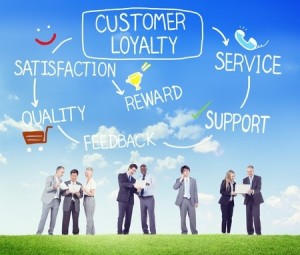
High-quality CRM software assists you with cultivating and maintaining strong customer relationships.
Customer Relationship Management (CRM) can contribute significantly to your company’s success. When you develop the best strategies and deploy the best tools to strengthen your relationship with existing and potential customers, your company enjoys important benefits.
High-quality CRM software assists you with cultivating and maintaining strong customer relationships. Why use a CRM product? In the long-run, it can save you money and improve profits by attracting more customers, increasing customer retention, and allowing your employees to work more efficiently.
How does it give you these benefits?
1) It keeps you organized and better informed
CRM software integrates customer information from a wide variety of sources, including email, social media, and in-store and online purchases. All of this information is kept centralized and updated, with a record of your interactions with each customer, including calls you’ve made and emails you’ve sent.
You can also keep track of customers’ feedback, including complaints about your products or services. All of this information, gathered in one place, gives you an important overview of your relationship with customers. It provides you with insights for how to keep reaching out to them, meeting or exceeding their expectations and addressing their concerns.
2) It contributes to a more meaningful relationship with customers and clients
Because your CRM product keeps track of customer information, you can use it to help make your interactions with customers more personal and meaningful to them. You can remember their preferences, interests, personal characteristics, and purchasing habits. You’ll be in a better position to understand when they expect to hear from you and when they’ll next need one of your services or products. You’ll also have greater insight into the types of qualities or information that will convince them to make a purchase.
3) It helps make your response to customers more timely and prompt
With CRM software, you can consistently keep track of when you need to contact your customers. You can prioritize the calls and emails you send out based on impending deadlines, the urgency of your customers’ needs, the stage of the sales cycle, and any other factors you consider important. You’re more likely to stay in touch with customers, follow up with them appropriately, and not leave them hanging when they need to hear back from you.
4) It allows you to work with flexibility and efficiency
With high-quality CRM software, you can access the relevant customer information from any device and location. Whether you’re at home, in the office, or on the road, you have access to everything you need.
Your CRM product can also integrate with other software and seamlessly become a part of your business operations. Different departments in your company can tap into it and utilize its insights. Not just your sales and marketing departments but also, for example, your IT personnel looking for feedback that will help them improve your company’s website. Or your customer service department evaluating patterns of problems that lead to customers leaving your company for competitors.
Furthermore, CRM software can accommodate your company’s growth. It can encompass a growing number of customers and clients, and new sources of information about them. You can also customize the software to best serve your company’s needs.
Making your CRM product an important part of your company’s success
Ultimately, your CRM product will be part of a general approach at your company that emphasizes a stronger relationship with customers and positive customer experiences.
In November 2015, Consumer Reports published a survey on poor customer service interactions, with many consumers complaining about a lack of a response, irrelevant sales pitches, and rudeness. These kinds of complaints aren’t limited to customer service representatives. Customers and clients also get turned off by similar behaviors from sales representatives and marketers. If your company comes across as tone-deaf, neglectful or belligerent, you’re much more likely to lose customers.
Your CRM software can give you the resources and tools to reach out to customers in a favorable way and remain responsive to their needs. Don’t hesitate to contact us for assistance with installing and customizing high-quality CRM software. Your CRM product can significantly improve your sales and your customers’ satisfaction.


